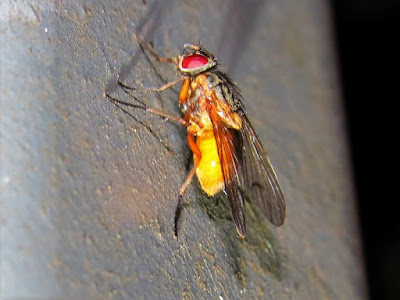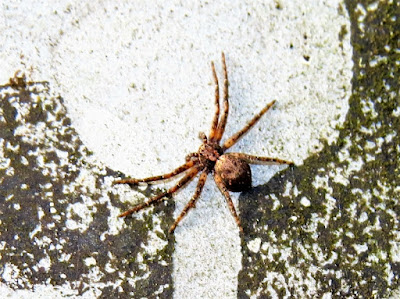9.0°C > 10.0°C: Mostly cloudy with some showers. A few bright intervals. Light winds early, increasing moderate SW. Excellent visibility except in heaviest showers.
Sunrise: 07:17 BST
* = a photo today
Priorslee Lake: 06:15 – 09:05
(221st visit of the year)
Amazingly after my first Common Kestrel of the year yesterday there was another today that flew low from the fields to the E at 07:50 – exactly the same time as I saw it yesterday. It flew off N.
Other bird notes:
- When I visited the football and academy fields areas there was at least 700 Black-headed Gulls together with three Herring Gulls and seven Lesser Black-backed Gulls. I saw no more than 250 Black-headed Gulls around the lake – so where did the others go? Unusually there were 59 still on the football field at 09:00.
- I counted 591 large gulls flying from the N / NW (very sad!). The position of the dark shower clouds made it difficult to say how many flew on without stopping.
Overhead:
- 3 Stock Doves: single and duo
- 121 Wood Pigeons
- 1 Herring Gull again
- 12 Lesser Black-backed Gulls
- ? large gulls: see notes
- 1 Cormorant
- 1 Common Buzzard
- 1 Common Kestrel again
- 240 Jackdaws
- 169 Rooks
- 1 Skylark
- 6 Pied Wagtails
Warblers noted:
- 2 Chiffchaffs: no song
Count from the lake area:
- 2 + 4 (1 brood) Mute Swans
- 5 (2♂) Mallard
- 15 (7♂) Tufted Duck
- 4 Moorhens
- 76 Coots
- 2 Little Grebes
- 4 Great Crested Grebes
- >700 Black-headed Gulls
- 13 Herring Gulls
- 37 Lesser Black-backed Gulls
- <591 large gulls: see notes
- 4 Cormorants: arrived as two duos
At / around the street lamps pre-dawn:
Other things:
- *1 Muscid fly, probably Thricops diaphanus
- 1 small ichneumon sp.
- *1 springtail sp.
- 1 Common Green Shieldbug (Palomena prasina)
- *1 Assassin bug of genus Coranus.
- 1 Leiobunum rotundum/blackwalli harvestman
Noted later:
- *1 Running crab spider of the genus Philodromus.
Everything else was hiding from the rain.
An update from yesterday: the small moth in the Priorslee Avenue tunnel yesterday was most likely a Common Flat-body (Agonopterix heracliana). This species can be found all year around and it hibernates as an adult. The Shropshire recorder notes that separation from the very similar Large Carrot Flat-body (Agonopterix ciliella) requires dissection of the genitalia.
An update from yesterday: the small moth in the Priorslee Avenue tunnel yesterday was most likely a Common Flat-body (Agonopterix heracliana). This species can be found all year around and it hibernates as an adult. The Shropshire recorder notes that separation from the very similar Large Carrot Flat-body (Agonopterix ciliella) requires dissection of the genitalia.
Yet another yellow-looking fly on one of the lamps. I think this is a Muscid fly, and probably Thricops diaphanus.
While I was trying to photo the large bug the smaller insect wandered in to the frame. Luckily I know a man who was able to help – thanks to Keith, the Shropshire recorder. The smaller one is a springtail sp., beyond that it is not possible to say from the photo. The larger is an assassin bug of genus Coranus. There are three species in the UK – C. subapterus; C. woodroffei and C. aethiops. It needs closer examination to specifically identify. Keith is intrigued as the few Shropshire records he is aware of are all from heathland. Also they are flightless so how did it get to Priorslee? And why did it climb a lamp-pole? I am under strict instructions to capture the next one I find which he will hopefully identify.
I have shown the effects of Spangle Gall Wasps (Neuroterus quercusbaccarum) previously but I have never seen such a dramatic effect as here. I am sure it is partly the result of the leaves beginning to die anyway but it does look extreme.
A running crab spider. Again I knew a man – thanks, Nigel. It is a running crab spider because all the legs are rather similar girth for running. On crab spiders that ambush their prey it is the first two pairs of legs that are noticeable more robust for grabbing its pre. It is from the genus Philodromus – from P. aureolus, P. cespitum or P. dispar. The dark areas of the background are the base of the figure 'five' as one digit of the lamp's identity. That shows how small this spider is.
(Ed Wilson)
The Flash: 09:10 – 09:55
(199th visit of the year)
Bird notes:
- No sign of yesterday's drake Teal.
- Some of the Tufted Duck seem to have gone back to the lake.
- All three Grey Herons seen concurrently.
- Seven small thrush sp. seen flying away from top-end trees. No calls heard and therefore they will have to stay unidentified.
Birds noted flying over here:
- 1 Common Buzzard
- 4 Starlings
Warblers noted:
- 1 Chiffchaff: no song
On /around the water:
- 20 Canada Geese
- 3 + 2 (1 brood) Mute Swan
- 37 (23♂) Mallard
- 10 (1+♂) Tufted Duck
- *10 (0♂) Goosander
- *6 Moorhens
- 21 Coots
- 2 + 3 (1 brood) Great Crested Grebes
- 25 Black-headed Gulls
- 3 Grey Herons
Nothing found on any lamp pole and nothing noted during the shower later:
------------------------------------------------------------------------------------------------------
The Flash: 09:10 – 09:55
(199th visit of the year)
Bird notes:
- No sign of yesterday's drake Teal.
- Some of the Tufted Duck seem to have gone back to the lake.
- All three Grey Herons seen concurrently.
- Seven small thrush sp. seen flying away from top-end trees. No calls heard and therefore they will have to stay unidentified.
Birds noted flying over here:
- 1 Common Buzzard
- 4 Starlings
Warblers noted:
- 1 Chiffchaff: no song
On /around the water:
- 20 Canada Geese
- 3 + 2 (1 brood) Mute Swan
- 37 (23♂) Mallard
- 10 (1+♂) Tufted Duck
- *10 (0♂) Goosander
- *6 Moorhens
- 21 Coots
- 2 + 3 (1 brood) Great Crested Grebes
- 25 Black-headed Gulls
- 3 Grey Herons
Nothing found on any lamp pole and nothing noted during the shower later:
As noted yesterday the Goosanders are back. Here are three of the ten present today. The shaggy crests on all three all three are adult ducks. The one on the left has the nictating membrane across its eye. This is a transparent or translucent third eyelid that can be drawn across the eye for protection and to moisten it while maintaining visibility.
An adult Moorhen attacking food provided for the ducks.
(Ed Wilson)
------------------------------------------------------------------------------------------------------
On this day can be found via the yearly links in the right-hand column.
Sightings from previous years without links are below
2013
Candles Landfill Site
1st-winter Yellow-legged Gull
(Tom Lowe)
2008
Trench Lock Pool
1st- winter Mediterranean Gull
c.150 Black-headed Gulls
15 Lesser Black-backed Gulls
1 Great Black-backed Gull
Shoveler
(Ed Wilson)






